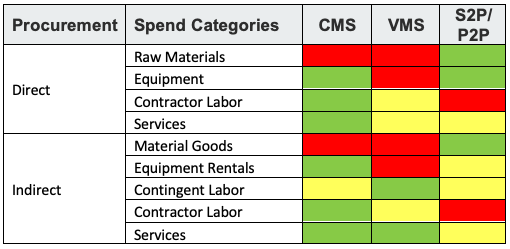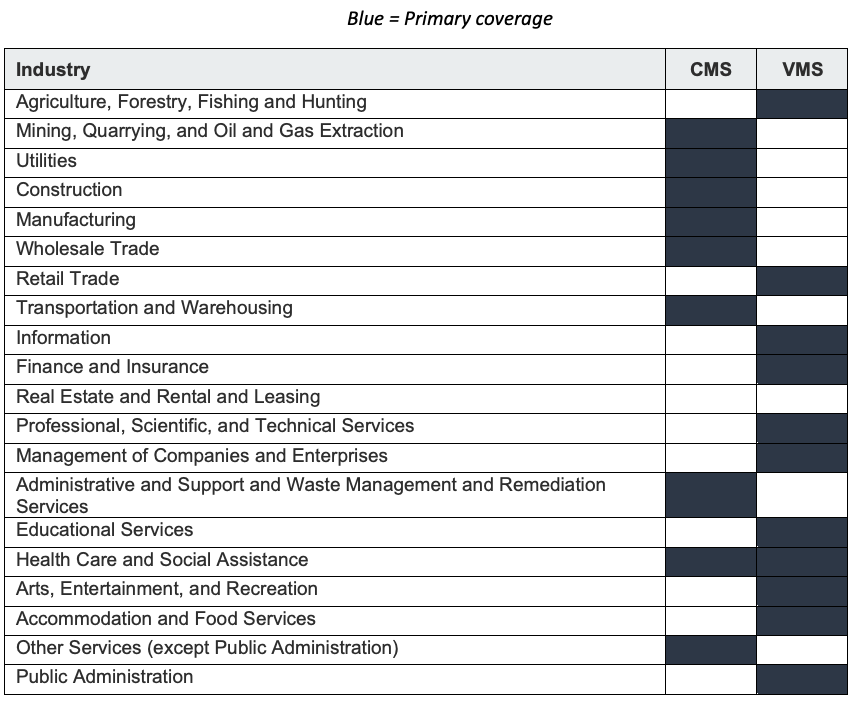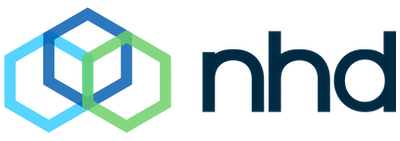What is your [Software] Legacy: An Overview of the Types of Procurement Software
Going Back to the Basics of Procurement Software
What is your procurement software legacy? Have you considered that the software decisions you make today, from the acquisition to the modifications, can have lasting impacts on the long-term success of your company?
If you are like most professionals, you probably haven’t given deep thought to the legacy you are leaving behind as it relates to your procurement software decisions. We are here to make the argument that if you are in a position to contribute to or make decisions as it relates to procurement software, it is worth your time to go back to the basics with us and consider the types of software available and what they can do for you and your company.
Why go back to basics?
There are three primary types of software that we will explore in this article: Source-to-Pay, Contractor Management Solutions, and Vendor Management Solutions. Knowing what each type is designed to support and how to properly incorporate them into your software network can empower you to make strategic decisions that establish a lasting legacy of success for your company, and it all starts with remembering the basics.

Creating a Software Legacy
Source-to-Pay (S2P) software solutions are staples within the software ecosystem of almost every large company on the planet. These software powerhouses provide serious purchasing power and process controls for the acquisition of materials, equipment, and professional services in nearly all industries. But how well does S2P support the acquisition and management of specialized trade contractors? How well do they support the acquisition and management of staff augmentation (also known as contingent) labor? Can S2P handle the purchases, rentals, and tracking related to high volumes of assets?
The answer to all of these questions is a simple ‘no’; at least, they cannot support these processes in any meaningful way. This is where Contractor Management Solutions (CMS), which support the purchasing processes related to specialized trade contractors and the accompanying assets, and Vendor Management Solutions (VMS), which support the purchasing processes related to contingent labor and professional services, come into play. It is important to differentiate when and how to use each of the three types of procurement software. Using them incorrectly or heavily modifying them to cover purchasing processes that they are not designed for can lead to long term disaster, thereby creating a procurement software legacy that your company will be feeling far into the future.
Financial, operational, and competitive impacts can result from a poorly set up software legacy and is certainly something to avoid. So how can you ensure a positive procurement software legacy for your company? It all starts with knowing the basics: what are the different procurement software types and what types of purchasing do they support? It is important to note that each of these software types provide coverage for the general procurement processes, i.e., engage suppliers, make a purchase request, fulfill the purchase request, invoice, and provide payment. They differentiate in the categories of spend that they provide process coverage for.
Software Overview & Comparison
A high-level overview of each type of procurement software is provided below. Take special note of the spend categories each type is designed to support:
- Source-to-Pay (S2P) software provides coverage of the end-to-end source-to-pay process for direct or indirect procurement, starting with Sourcing and ending with payment. At a very high level, this type of software follows the process of finding suppliers, negotiating prices and terms, contracting, making requests, fulfilling requests, invoicing, payment, and supplier management.
- Contractor Management Solutions (CMS) provides coverage of the source-to-pay processes for labor and services of specialized trade contractors, the accompanying assets, and their complex rate structures in both direct and indirect spend categories. Unlike an S2P or P2P software, CMS provides coverage for the day-to-day planning and management of the contractors and contract terms (scheduling, time management, skills management, etc.), and the focus is primarily asset-intensive industries like oil, gas, and chemicals
- Vendor Management Solutions (VMS) provide coverage of the talent sourcing, procurement, and HR processes for contingent labor and professional services for indirect categories of spend. Talent sourcing, i.e. managing job postings, candidate selection, and the hiring of temporary workers is what makes the VMS unique within the realm of procurement software.
With the overview above providing the general purpose for each software type, we can now take a comparative look at the categories of spend each provides coverage for.
The chart compares the coverage for both direct procurement (costs incurred from developing, creating, and releasing a product or service) and indirect procurement (costs incurred from maintaining and running the business) of each software type:
Green = Primary coverage; Yellow = Secondary coverage; Red = No coverage
Procurement | Spend Categories | CMS | VMS | S2P/ P2P |
Direct | Raw Materials | ♦ | ♦ | ♦ |
Equipment | ♦ | ♦ | ♦ | |
Contractor Labor | ♦ | ♦ | ♦ | |
Services | ♦ | ♦ | ♦ | |
Indirect | Material Goods | ♦ | ♦ | ♦ |
Equipment Rentals | ♦ | ♦ | ♦ | |
Contingent Labor | ♦ | ♦ | ♦ | |
Contractor Labor | ♦ | ♦ | ♦ | |
Services | ♦ | ♦ | ♦ |
Green = Primary coverage
Yellow = Secondary coverage
Red = No coverage

The chart shows that each type of software has primary spend categories (green) they support, with secondary spend categories (yellow) having some degree of process coverage as they relate to the primary.
The chart also shows that there are spend category gaps in each type of software solution, making holistic purchasing coverage of every type of spend category impossible to get from a single type of solution. Before we jump into some considerations for your procurement software legacy, let’s first take a look at the primary industries supported by each type of software solution.
S2P software provides coverage for almost every major industry. CMS and VMS differentiate in that they provide primary coverage for different industries. CMS is designed primarily to support the processes relating to specialized trade contractors and high volumes of assets in asset-intensive industries, so you will see this type of software primarily in industrial and MRO businesses.
VMS is designed primarily to support the processes relating to contingent (temp/staff augmentation) workers and professional services, so you will see this type of software primarily in industries that do not rely as heavily on the trades and assets:
Considerations for Your Software Legacy
Determining when and how to use the three types of procurement software is made simpler when we remember the primary spend categories they are designed to support. Keeping the software solutions within the intended designs for their primary spend categories can set up a beneficial legacy for you and your company. Doing so can save your company money, reduce process pains, and contribute to a thriving procurement software ecosystem. This brings us to the first consideration as it relates to your procurement software:
Is your current procurement software operating within the intended designs for their primary spend categories? As a CMS provider, we often work with companies that have an S2P solutions in place that have been heavily customized to try and provide coverage of spend categories they are not designed for – namely coverage for external labor, services, and accompanying assets. We have also seen many large companies in our primary industries that modify their VMS solutions in an attempt to cover industrial/trade contractors and the accompanying assets.
On paper it can look promising to modify one of the software types to accommodate additional types of spend, but it almost always ends in disaster. While you may be able to customize these solutions for a slight improvement in coverage of the secondary spend categories, the customizations in most cases set the foundation for a software legacy of making more and more modifications to support the original modifications.
We often see that these modifications cycles require additional labor to become highly specialized in the newly unique software in order to maintain the support for the secondary spend categories. This usually results in more complex process steps, higher costs to maintain operation of the software, and more spend leakage from end users who go around the processes as they are growing disenchanted by clunky procurement software.
That consideration brings us to the next one. Is there a need to bring your procurement software back to the basics? If you have highly customized procurement software in place to support secondary or tertiary spend categories, it may be time to consider cutting the losses and straighten the path of your software legacy. In nearly all cases, the long-term performance, cost savings, and process efficiencies that come from keeping your software operating as intended will drastically outweigh the initial cost of adding the right types of software to the ecosystem.
Closing Thoughts
With the new year and accompanying thoughts of fresh starts right around the corner, now is the perfect time to begin thinking through your procurement software legacy.
As is the case with many fresh starts, taking a renewed look at the basics can help course correct for the areas where your procurement software has strayed from the intended spend categories.
With all this in mind – what is your software legacy? Are you and your company making procurement software decisions that will provide benefits well into the future? Taking the time to think these things through is the most important first step to ensuring a legacy that stands the test of time in its benefits.
Tired Of The Lack Of Transparency In Your External Spend?
Keep your business running smoothly with transparent labour and service procurement.
Simplify all tasks related to the management of the external workforce.
What Our Customers Say
Fully integrating and digitalizing Contractor Management is no easy task – but AES/32 has proven to be worth it in the short time it’s been in use. The dashboard view of work completed and payments due shows what’s on track and bottlenecks for intervention. Returns will multiply significantly as we scale up the number of contractors over time across multiple sites.



